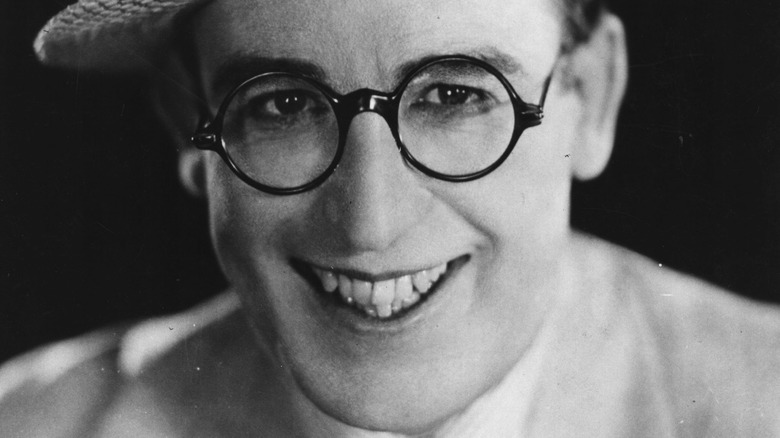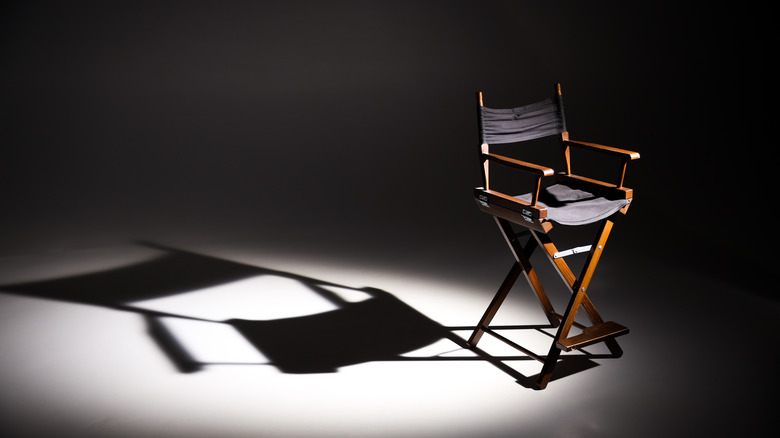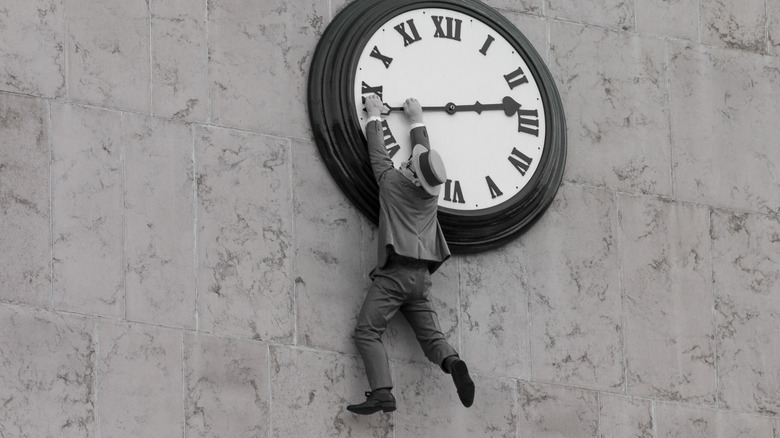A Silent Film Star Lost His Fingers Because Of A Prop Bomb
Actor Harold Lloyd, sometimes known as the "Glasses Character," was compared to other comedic stars of the silent film era, like Charlie Chaplin or Buster Keaton, according to Turner Classic Movies. You might know him from the photograph of his famous "hanging clock" stunt. The stunt is even more impressive when you learn that Lloyd performed it after a shocking accident that left him with a prosthetic appendage.
The incident played out one weekend in August 1919, according to Harold Lloyd's website. That Sunday, Lloyd was supposed to be doing a photoshoot. In one shot, he was supposed to put a cigarette to his lips and pretend to light it with the fuse on a small circular bomb.
Lloyd was holding a cigarette that was already lit, according to Harold Lloyd Dot US. He put his cigarette on the fuse of the bomb, lighting it. It suddenly began to smoke.
A life-changing accident
There was too much smoke to take the photo — so Harold Lloyd began to put the prop bomb aside, planning to grab a different one, according to Harold Lloyd Dot US. But this was no prop. A real bomb blew up in his hand. The explosion was so intense that it burst a hole through the ceiling 16 feet above Lloyd's head.
The bomb exploded in Lloyd's right hand, badly damaging it, according to "Cinema of Isolation: A History of Physical Disability." He was immediately blinded. Harold Lloyd Dot US reports that the photographer passed out, while Lloyd, in complete shock and feeling no pain, didn't even move at first. He said his face looked like "raw meat." Lloyd was rushed to a nearby hospital, where he remained for more than two weeks as doctors tended to his wounds and battled a potential gangrene infection.
His doctors even told Lloyd that he would probably never see again, per "Cinema of Isolation: A History of Physical Disability." He lost his thumb and one finger, while the rest of his hand was partially paralyzed.
Healing at the hospital
Motion Picture reports that even while in the hospital, Harold Lloyd was grateful to have survived the incident at all. But he also worried about his future. He thought his injuries might be so severe that he would never work again. For weeks, he believed he had gone completely blind. According to Vanity Fair, he would see black specks in his vision for the rest of his life — remnants of shrapnel that still remained in his right eye.
The actor did regain his sight in both eyes, according to Harold Lloyd Dot US. A prosthetic was fitted for Lloyd's right hand. Per "Cinema of Isolation: A History of Physical Disability," Lloyd's disability didn't stop him from working. After regaining his health, he returned to acting and stunt work, and he was even inspired to take more risks than he had before.
Lloyd usually wore a glove over his right hand, or applied makeup to it, so that the injury wouldn't be as noticeable to the audience (via Harold Lloyd's website). He was concerned that if viewers knew about his disability, they might be worried about his stunt work, instead of amused.
Getting back to work
In the movie "High and Dizzy," released in 1921, Harold Lloyd follows a sleepwalker out onto a precarious ledge — there was no camera trickery, Lloyd did real and dangerous stunts (via Turner Classic Movies). He went on to do other acclaimed stunts, like in the 1923 flick "Safety Last!" where he actually climbed a tall building and dangled from a clock tower ten stories off the ground. At one point, he holds on with one hand, according to Harold Lloyd's website. The stuntman would have fallen three stories onto a mattress if his climb happened to go wrong, most likely getting injured whether he landed on the mattress or not.
By 1928, Lloyd was the highest paid film star in Hollywood. He had a lengthy career, and he would go on to act in more than 200 movies by the end of his acting career in the 1970s.



